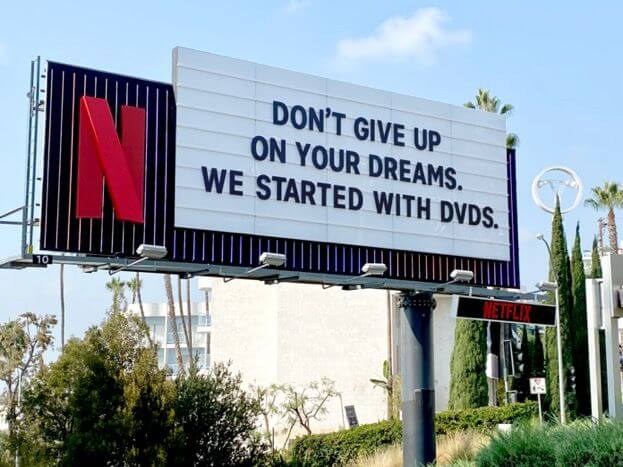What are organizational core values?
These are the central, guiding beliefs and principles that underpin a company and its employees: ‘cultural cornerstones’ if you like. They also frame how the company deals with customers, partnerships, and stakeholders.
The idea of organizational core values was first identified in 1994 in the book, Built to Last by Jim Collins and Jerry Porras. The authors argued that many of the best, most enduring companies had principles that they termed ‘core values’ at their hearts:
“Being inherent and sacrosanct; they can never be compromised, either for convenience or short-term economic gain. Corporate core values may reflect the values of the company’s founders.”
What organizational core values are not, though, are meaningless words and phrases. After all, ‘Communication. Respect. Integrity. Excellence’ all sound pretty good until you find out they were the core values of a collapsed, disgraced energy company, Enron.
Free eBook: How to be an inclusive leader
Why are core values so important?
An organization’s values don’t exist in a vacuum; they are the foundation of your company’s culture, running through the company’s DNA, guiding the business and your people towards a shared mission or goal. They must be firmly embedded into everything your company does.
There are several benefits to having meaningful company values:
- Decision-making becomes easier By adhering to core company values, you can eliminate choices that would compromise them, e.g. your company will sell only sustainably sourced cotton, so you eliminate all those suppliers whose cotton comes from an unsustainable source
- Avoid or resolve conflict: Where everyone shares the same values and goals, there is more common ground rather than less, making it easier to agree on issues
- Communication is more straightforward: when everybody – employees, customers, partners, and stakeholders – understands what a company will (and won’t) stand for, e.g. it is easier to complain about a poor workplace environment
- Building trust: when management makes a difficult decision that is the right one, in line with company values, even if it costs the business in the short term, employees will trust and respect the leadership
- Hiring becomes easier: When you know your company principles, it becomes easier to select top talent – recruits who share your ethos, are likely to embrace it wholeheartedly, will be engaged and motivated, and stay longer
- Your values reflect your brand: There’s nothing that harms a brand faster than customers finding out that its business practices are questionable. When a company lives by its core values, it has a competitive advantage over those companies that are less transparent.

Image Source: LinkedIn
How can you define your own organizational core values?
If you’re not sure that your organizational core values are currently aligned to your brand or your workforce, it may be time to take a long, hard look at them.
There are several things you can do:
Audit your existing company culture
You may think your company is doing all right, but do you really know what people think of it, both internally and externally? Find out what customers, employees, the C-suite, partners, and suppliers think of the business by surveying them. What do they think the business stands for, and how is it demonstrating those values?
Review your business strategy
Corporate culture influences productivity. Business strategy and corporate culture are interlinked, so it’s important to align your values with where your business is going in the future. Look at potential expansion, production, employee numbers, and revenue, and what cultural shifts can help you achieve these.
Decide the culture to fit the strategy
The question to ask here is ‘to get from point A (now) to point B (the strategic goal) what culture do we need to put in place?’ Then, decide which personalities, skills, backgrounds and education will best fit your teams and create your organizational culture.
Revise your values
After identifying the culture and the people you need, might you have to shift your values to attain your goals? You may need to invest in new infrastructure, or recruit different types of people.
Clarify your core values
A core value is not just a list of abstract words on a company’s mission statement; employees need to be clear about what they need to do to fulfill the values. For example, ‘contribute positively to our communities’ – does this mean volunteering, donations, outreach to homeless people, attending local events? What is expected for each value must be clear.
Integrate core values into your operations
This starts with recruitment: do candidates’ values chime with the company’s? Are the values clearly set out in employment contracts? Are performance reviews and rewards based on adherence to company values? With clear core values, not only will you hire the right people, but you will engage them, they can be their authentic selves at work, and feel they have a job with purpose.

Image Source: Slideshare
How do core values enhance employee experience?
Recruiting talented employees is the easy bit. The challenge is to keep them loving the job and staying with your company. Employee satisfaction is important. Employee attrition costs businesses dearly – the average costs to replace an employee are:
- $1,500 for hourly employees
- 100 to 150% of a technical employee’s salary
- Up to 213% of a C-suite executive’s salary
Having core values lowers the attrition rate, helping businesses engage their employees more effectively because:
- They give a framework that tells employees, right from the beginning, what kind of organization they are joining and what their roles as team members will be
- Employees have clear expectations of what they will be doing, giving them security and a sense of belonging. The more an employee feels they belong and are secure, the more engaged and productive they will be, and will go the extra mile.
- There is less disillusionment as recruits know exactly what they signed on the dotted line for, and are less likely to leave.
- Employees are not afraid to challenge management to live up to the same standards as the rest of the workforce, e.g. when a company prides itself on being transparent, senior managers must expect to answer tricky questions about things like remuneration, budgets, ethics, and investments
- Core values that resonate with the public give not only a competitive advantage but employees a sense of pride that they work for a well-regarded company.

Do organizational core values deliver a return on investment (ROI)?
The short answer is yes. And the longer answer is yes, you can measure it, by combining your O (operational) and your X (experience) data. Research has shown that when sound corporate values inspire excellent company culture, there can be positive impacts on:
- Revenue: increases 4x faster
- Cost per hire: 50% savings
- Recruitment fees: 22% reduction
- Employee engagement and profitability: when investments in employee engagement are increased by 10%, profits can increase by $2400 per employee
- Employee retention is dramatically increased
- Customer satisfaction doubles
When you use a market research platform such as our XM Market Research software you’ll be able to gather the knowledge and insights you need to ditch those old organizational core values that are no longer delivering ROI. Instead, you can develop new ones that not only deliver profit but make every employee feel good about working at your company.
Free eBook: How to be an inclusive leader
Core values of successful companies – some examples
IKEA
Swedish home furnishings giant IKEA’s mantra is:
‘We’re constantly trying to find better ways to get things done and to bring out the best in ourselves and others.”

Image Source: IKEA
IKEA’s core values are:
- Togetherness
- Caring for people and the planet
- Cost-consciousness
- Simplicity
- Renew and improve
- Different with a meaning
- Give and take responsibility
- Lead by example
Qualtrics
Thoughtful core company values shape experience management company Qualtrics, as you would imagine.
“Culture is something that lives in every one of us. Great companies carefully define their culture through their core values. Once you do that, you hire people who express those values long before they join your company. This helps ensure that as the company grows, the culture is enhanced, not diluted.” Russ Laraway, VP of People Operations, Qualtrics.

Qualtrics’s core values are neatly summed up in the catchy acronym TACOS:
T – Transparency: building a culture where the default is to share with one another.
A – All in: ‘We bet on Qualtrics and Qualtrics bets on us’. 94% of Qualtrics employees say they agree with the statement that they’re willing to put in effort beyond what is expected of them.
C – Customer Obsessed: ‘If a customer is upset, we failed. Period. We learn, and we fix it.’
O – One Team: There is only one team at Qualtrics. 82% of employees said that Qualtrics is positively inclusive
S – Scrappy: Qualtrics is smart, resourceful, and finds a way, achieving goals with what is available to us.
Ben & Jerry’s

Image Source: Ben & Jerry’s
Quirky, hippy, homespun Ben & Jerry’s calls itself ‘an ice cream company, but with a heart and soul’, founded on strong and transparent core values.
“It’s rare that you are encouraged to bring your values to the workplace. This is a place where, if you have these values, please bring them with you.”
Ben and Jerry’s values statement is in three parts:
- Product Mission ‘drives us to make fantastic ice cream—for its own sake’
- Economic Mission ‘asks us to manage our company for sustainable financial growth’.
- Social Mission ‘compels us to use our company in innovative ways to make the world a better place’.

Image Source: BrandBoy
Without Google taming content on the world wide web by ranking search results by popularity, the internet would have remained messy and chaotic for much longer. Their clarity of vision also shines through in their philosophy, ‘Ten things we know to be true’:
- Focus on the user and all else will follow.
- It’s best to do one thing really, really well.
- Fast is better than slow.
- Democracy on the web works.
- You don’t need to be at your desk to need an answer.
- You can make money without doing evil.
- There’s always more information out there.
- The need for information crosses all borders.
- You can be serious without a suit.
- Great just isn’t good enough.
Nike

Image Source: Nike
Nike has a clear mission, vision, purpose, and core values. The company uses the guiding principles in its values statement to base its brand on equality, diversity, social and environmental impacts, and sport evolution:
“Our mission is what drives us to do everything possible to expand human potential. We do that by creating groundbreaking sport innovations, by making our products more sustainably, by building a creative and diverse global team and by making a positive impact in communities where we live and work.”
Nike’s core values are:
- Community
- Sustainability
- Diversity
- Social responsibility
And finally…
Clearly-defined company values are essential for a business to succeed. They need to be consistently reinforced and regularly reviewed, as they are the bedrock of the long-term growth and value of your company and brand.
Free eBook: How to be an inclusive leader